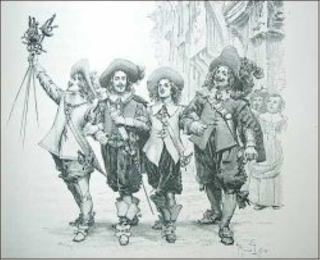 Amelia Earhart was a pioneer in the field of Aviation. She achieved fame and acclaim as the first women to make a solo flight across the Atlantic. She made many other achievements in the field of aviation.Earhart’s distinguished career was tragically cut short when she mysteriously disappeared while attempting to make a flight around the globe. Her remarkable story and her legacy in the field of aviation endure to this day.
Amelia Earhart was a pioneer in the field of Aviation. She achieved fame and acclaim as the first women to make a solo flight across the Atlantic. She made many other achievements in the field of aviation.Earhart’s distinguished career was tragically cut short when she mysteriously disappeared while attempting to make a flight around the globe. Her remarkable story and her legacy in the field of aviation endure to this day.Amelia was born in 1897 in Kansas, USA. Drawn to flying from a young age, she saved money and took flying lessons, determined to live out her love for aviation. She soon managed to buy an airplane and in the following years made many achievements in aviation, including the first solo transcontinental flight and won recognition by performing many aviation feats.
In 1932, Earhart became the first women to fly solo across the Atlantic, five years after Charles Lindbergh made the first solo flight across the Atlantic. Starting from Newfoundland, she flew across and landed in Londonderry, Ireland.
Three years later in 1935, she scaled another height when she became the first person to fly solo across the Pacific Ocean from Honolulu to California.
In the United States, Earhart soon became an icon. She was awarded the Distinguished Flying Cross by the Congress of the United States and received many other awards. Earhart also made great effort to popularize aviation. She was amongst the first people who tried to develop commercial aviation. The first flight service between New York and Washington DC was set up, thanks in part to her efforts and investment. She also went on to hold important positions in the fledgling airline industry.
In 1936, Earhart made plans for a flight around the world. She chose to circle the globe along the longest path – along the equator with a navigator, Fred Noonan. Her first attempt had to be abandoned due to technical problems. She started again a few months later from Miami. She arrived at Lae, New Guinea on 29th June 1937, having covered over 22,000 miles. She, now, had to cover the remaining 7,000 miles over the Pacific.
The next day, Earhart took off from Lae. Her planned landing was to be at Howland Island, a small island just a few miles long. The US Coast Guard vessel, the USGSC Itasca was stationed to coordinate the landing. Earhart and her navigator, Fred Noonan were able to make radio contact with the USGSC Itasca. Soon, communication with the aircraft was lost. What happened next remains unclear. The Coast Guard vessel initially received messages from Earhart’s plane. But, the aircraft was unable to receive messages sent from the ship.
Suddenly, all contact with the plane was lost. Desperate attempts were made by radio operators across the pacific to contact Earhart, but, in vain. The US Navy made an exhaustive search and rescue operation in the Pacific to rescue her. However, no trace of the plane and its pilot could be found.
The life of a brave young woman had come to a tragic end. Over the years, many theories would emerge about Earhart and her disappearance. Some claimed that Earhart managed to land her plane on a remote, uninhabited island but died shortly afterwards. Other claimed that she was taken prisoner by the Japanese, an enemy of the United States during the time, and was executed along with her navigator, Noonan.
However, no conclusion could be reached on what happened to Amelia Earhart. Amelia Earhart was a pioneering woman who achieved remarkable things in her life and made contribution to the field of aviation. She was seen as a symbol of women’s achievement. Her accomplishments were admirable, given the time she lived in. She remains an inspiration through her achievement and her career.

 When Santa has finished with dispensing his goodies to the world’s children, where does he go back to? Where does he live? Well, according to the people of Finland, Santa lives in the northern part of their country, known as Lapland. He lives in a place called Korvatunturi.
When Santa has finished with dispensing his goodies to the world’s children, where does he go back to? Where does he live? Well, according to the people of Finland, Santa lives in the northern part of their country, known as Lapland. He lives in a place called Korvatunturi.  The Dugong is an aquatic mammal that lives in the sea, usually in shallow areas such as channels, bays, etc.
The Dugong is an aquatic mammal that lives in the sea, usually in shallow areas such as channels, bays, etc. 

 "The Three Musketeers" is a novel by the noted French Playwright and novelist, Alexander Dumas. Set in the backdrop of the French political scene before the French revolution, the novel details the adventures of a young man,
"The Three Musketeers" is a novel by the noted French Playwright and novelist, Alexander Dumas. Set in the backdrop of the French political scene before the French revolution, the novel details the adventures of a young man, 
|